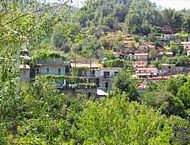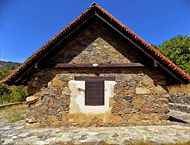Troodos Villages
Pitsilia Villages
Located east of Mount Olympos, the Pitsilia region comprises of 11 quaint villages nestled amid vineyards and valleys. The Pisilia village, a Nom d’Origine winner, along with the rest picturesque villages are scattered around the hillsides of Madari, Macharas and Papoutsa. The fertile land and high altitude of the region allow for a slow and effortless grape maturity contributing to the richness of the wine. Dominated by local grape varieties, the region promises an exceptional wine experience.
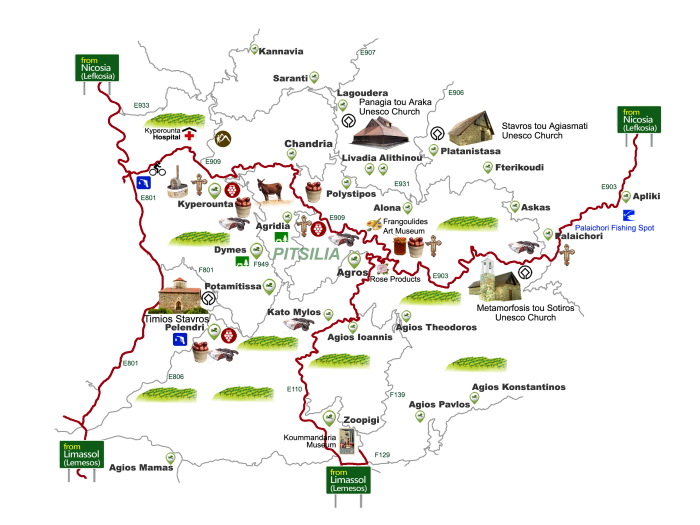
Palaichori village
The quaint village of Palaichori, sits at an altitude of 930 meters. Separated by the Serrache River, the village trives in the cultivation of vineyards, fruit and trees.
Maintainig its tradition architecture, in the sea of green stone built houses with tiled roofs are dotted on the hill. Find accommodation in one of the beautiful houses. Explore the village and taste the…
Palaichori Village
The quaint village of Palaichori, sits at an altitude of 930 meters. Separated by the Serrache River, the village trives in the cultivation of vineyards, fruit and trees.
Maintainig its tradition architecture, in the sea of green stone built houses with tiled roofs are dotted on the hill. Find accommodation in one of the beautiful houses. Explore the village and taste the traditionally produced spirit of Zivania. Mix in with the locals and share a drink with them, as it is customary to share Zivania with friends in the church courtyard on name days.
Find a number of old churches located in the village. Of significance is the church of the 16th century Byzantine church of the Transfiguration of the Saviour, part of the UNESCO World Heritage List. Visit also the 17th century church of St. George. Learn more about the religious background of the village at the Museum exhibiting Byzantine Heritage. Unveil history at the restored hideout of the island’s national hero, Grigiris Afxentiou and visit the memorial museum of the Liberation Struggle.
Nature enthusiasts can parktake in the leisurly hobby of fishing at the Palaichori Dam.
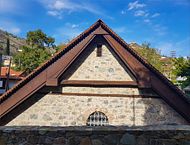
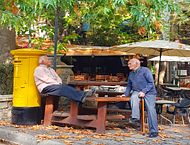

Kyperounta Village
Climbing upwards toward the Troodos mountains, at an altitude of 1,300 meters is the village of Kyperounta. It holds the title of the third highest village on the island and stands out for its uphill roads.
A charming village which maintains its traditional character, featuring houses with tiles roofs, grapevines and paved narrow alleys.
Kyperounta Village
Climbing upwards toward the Troodos mountains, at an altitude of 1,300 meters is the village of Kyperounta. It holds the title of the third highest village on the island and stands out for its uphill roads.
A charming village which maintains its traditional character, featuring houses with tiles roofs, grapevines and paved narrow alleys.
Established in the Byzantine times, the village churches stand proof of its rich history. Visit the Agia Marina church, the Panagia and Chrysotheros church and the chapel of the Virgin Mary. The chapel of the Holy Cross, houses ecclesiastical sculptures and is adorned with frescoes dating back to 1521, placing it in the UNESCO World Heritage List. The most recent wonder and pride jewel of the community is the church dedicated to Agios Arsenios. Reaching toward the diving, the tower of the belfry reaches 34 meters high, while the interior of the church creates an imposing atmosphere.
Amongst the attractions are three museums holding important information about the village and its past. Visit the Natural History, Fold Art and the Nation Liberation Struggle museum, each offering its own piece of evidence for the rich history of the village.
If you are interested in adventure, visit the Adventure park or trek into nature at one of the two nature tails, the ‘Dokas soi o Theos’ and ‘Teisia tis Madaris’.

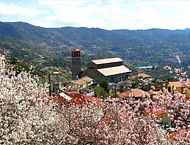

Agros village
The village of roses, located at an altitude of 1100 meters, Agros village is one of the most interesting villages of the region.
Built amphitheatrically, it keeps its historical and cultural site in natural environment preserving their traditional character and beauty. Apart from the world renowned rose production, the village also…
Agros Village
The village of roses, located at an altitude of 1100 meters, Agros village is one of the most interesting villages of the region.
Built amphitheatrically, it keeps its historical and cultural site in natural environment preserving their traditional character and beauty. Apart from the world renowned rose production, the village also cultivates amongst other fruits grapes. Sample traditional cold cuts (sausages, lountza and choiromeri), local delicacies like soutzoukos, traditional sweets and marmalades.
Explore religion and history at one of the many churches and museums. Visit the church of Panagia Eleousa, built where the Great Agros Monastery once stood, the church of Timios Prodormos, the church of Agios Gerasimos and the church Agia Kyriaki. Discover about one of the most important representative of the first generation of Cypriot artists at the Fragoulidis Museum. Learn about the local traditions at the Olive Press, exhibiting the press and tools used in the process. Study nature by trekking one of the three nature trails located in the area.
If visiting during the month of May, the annual Rose Festival is one not to be missed.



Pelendri village
Surrounded by steep mountains and rough deep valleys, situated at an altitude of 800 meters is the alluring village of Peledri.
Preserving to a large degree its traditional architecture, houses built with local rock gabbrou, closed behind wooden doors decorated with blooming yards created a scenic environment.
Pelendri Village
Surrounded by steep mountains and rough deep valleys, situated at an altitude of 800 meters is the alluring village of Peledri.
Preserving to a large degree its traditional architecture, houses built with local rock gabbrou, closed behind wooden doors decorated with blooming yards created a scenic environment. Blessed with annual rainfall fruit trees, olive trees, almond and walnut trees are cultivated.
Present since the medieval times, the village has preserved a number of historic monuments. Visit one of the churches to admire Byzantine art. The church of the Holy Cross is adorned with frescoes dating back to 1178 and is a proclaimed UNESCO World Heritage site. The church of Panagia Katholikis, houses 16th century icons, while the church of Ioannis Lambadistis and the church of Archangel Michael are positioned within view of each other’s bell tower.
Wine making has flourished in the area and two of the most well-known wineries of the village are included in the ‘Nom d’Origine’. Sample exquisite wine while enjoying inebriating views. Stop for a drink or enjoy the Cypriot cuisine made from local produce.
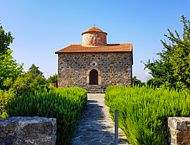
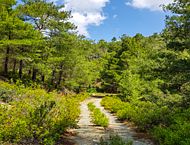

Askas Village
The village of Askas, sits at an altitude of 900 meters. Surrounded by steep mountains, rich green valleys and crossed by the river Askas the village is the picture perfect location. As a small village, it maintains its traditional character with folk stone built houses, dark wooden doors and narrow…
More InformationAskas Village
The village of Askas, sits at an altitude of 900 meters. Surrounded by steep mountains, rich green valleys and crossed by the river Askas the village is the picture perfect location. As a small village, it maintains its traditional character with folk stone built houses, dark wooden doors and narrow balconies. Explore the scenic windinf alleys and admire the medieval church of St. John the Baptist built in the 16th century, and the Holy Cross church.
The cultivation of vegetables, pulses, fruit, olive, walnut and almond trees occupy the villagers. However, the main occupation is viniculture. Sample the traditional spirit ‘Zivania’, distilled locally or visit the local taverns for some authentic Cypriot cuisine.
Adventure more, by trekking the two nature trails located in the village and take in the beauty of nature.


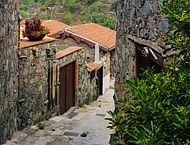
Farmakas Village
Perched on the slopes of Troodos mountain sits the quant village of Farmakas. Explore Cypriot rural living, and take in the breathtaking views of mountain slopes and vast green.
More InformationFarmakas Village
Perched on the slopes of Troodos mountain sits the quant village of Farmakas. Explore Cypriot rural living, and take in the breathtaking views of mountain slopes and vast green.
Visit the village church dedicated to Saint Irene, celebrated on May 5th, gathering many believers on their pilgrimage, along with their offerings. Considered to be the patroness of mesh, village elders claim the Saint’s icons is miraculous having healed patient’s eyes.
Explore the local vineyards, sample exquisite wine and enjoy delectable Cypriot cuisine at one of the restaurants.
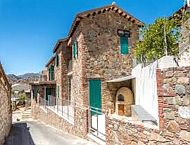


Gourri Village
Standing at the foothills of Machairas forest is the scenic village of Gourri. A scenic village preserving its traditional character with the cobbled alleys, stone built houses and wood details.
More InformationGourri Village
Standing at the foothills of Machairas forest is the scenic village of Gourri. A scenic village preserving its traditional character with the cobbled alleys, stone built houses and wood details.
Explore the village and visit the Folk Art Museum, which opened its doors in 2015, and learn more about traditions and the history of the village. Discover more about the religious background of the village and step in to the church of Agios Georgios, which was inaugurated in 1898 based on ancient inscriptions. Admire the iconostasi adorning the church dating back to 1906.
Don’t miss the opportunity to purchase local, handmade traditional sweets and preserves such as marmalades, or relax at one of the local cafes.

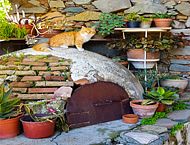

Agios Theodoros Village
At the foothills of Papoutsa mountains, at an altitude of 1023 meters, stands the village of Agios Theodoros Pitsilia. Built on the seven hills, it is the third highest village of the island.
Explore the village and be welcomed by scenic sights. Almond, peach, cherry and apple trees along with pine trees decorate the traditional houses bringing them to life. Vines have the leading role amongst the vegetation, creating a small terrestrial paradise.
Agios Theodoros Village
At the foothills of Papoutsa mountains, at an altitude of 1023 meters, stands the village of Agios Theodoros Pitsilia. Built on the seven hills, it is the third highest village of the island.
Explore the village and be welcomed by scenic sights. Almond, peach, cherry and apple trees along with pine trees decorate the traditional houses bringing them to life. Vines have the leading role amongst the vegetation, creating a small terrestrial paradise.
The famous painter Adamantios Diamantis, lived in the village, which inspired his works, many of which depict the beauty of the village throughout the changing seasons.
The village holds rich history dating back to the 4th century BC. A tomb revealed itself in the village center in 1976, unearthing clay pots and relics belonging to the Roman era. Visit the Museum of Rural Life, the Historical and Folklore Museum exhibiting everyday rural life and historical events. Admire the section dedicated to the known painter Adamantio Diamantis with some of his personal objects. Within the museum two important icons are houses. The Virgin Mary of Vrefokratousa and Prophet Elias. Learn about the tradition of olive pressing at the old Olive press.
Having the title of ‘Eptalofi of Pitsilia’ (meaning seven hills) on each of the seven hills stood a church. Of those seven, three have survived. The church of Panagia Kivotou, a 16th century build, adorned with a 17th century wood-carved iconostasi, the icons of Prophet Elijah and Jesus Christ; the church of Agios Georgios, built in 1840, housing a gospel dating back to 1550 and the church of Agios Theodors, built in 1977 in place of the old church.
Walk around the village and enjoy nature, discover the century old terebinth tree near the church of Panagia as wee as an oak and pine tree, protected by the Forestry Department. Enjoy the cool climate, verdant surroundings and the true Cypriot rural life.


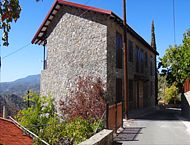
Chandria Village
The second highest village of the island, Chandria is built on the southern slopes of Madaris at an altitude of 1275 meters.
The village is divided by the tributaries of the river Limnati, with small narrow valleys. In the valleys walnut, apple, pear, peach and other fruit trees are cultivated. Decorating the slopes are vines and almond trees.
Chandria Village
The second highest village of the island, Chandria is built on the southern slopes of Madaris at an altitude of 1275 meters.
The village is divided by the tributaries of the river Limnati, with small narrow valleys. In the valleys walnut, apple, pear, peach and other fruit trees are cultivated. Decorating the slopes are vines and almond trees.
The history of the village dates back to the Venetian era. While during the EOKA struggle in the village guerrilla groups were operating. Visit the church of Archangel Michael built in 1992, succeeding the church of saint George located in the east of the village, as it was too small to accommodate the growing number of faithful.
Explore the village and try the local delicacy of Loukoumades along with some coffee, or sample some tasty local cuisine. Enjoy the village which exudes tranquility and relaxation.


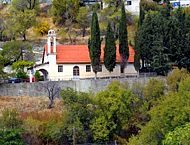
Potamitissa Village
The village Potamitissa stands at an altitude of 820 meters, among pine clad mountain peaks.
Researchers have discovered that a Byzantine monastery dedicated to Panagia Eleous was found near the present village.
Potamitissa Village
The village Potamitissa stands at an altitude of 820 meters, among pine clad mountain peaks.
Researchers have discovered that a Byzantine monastery dedicated to Panagia Eleous was found near the present village.
The Ambelikos river divides the village with the left banks being adorned with rich vegetation of vines, apple, peach, olive, walnut and almond trees thriving in the Mediterranean climate. Visit the main village church of Virgin Mary Eleousa, housing the Holy icon, and the chapel of Chrysomirous built in 1972, hidden within olive and pine trees.
Enjoy the refreshing alpine atmosphere, and relax at the local coffee shop or sample Cypriot cuisine at the local tavern. Visit the village during the summer and have fun at music nights, theater nights and the various events hosted at the village. Experience the Cypriot hospitality with offered Zivania, local cold cuts, homemade sweets and desserts made form grape juice.
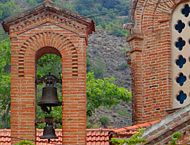
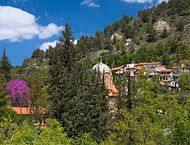

Polystypos Village
Polystypos, a village dotted with springs and streams, colored by vineyards and wild vegetation, is the destination which exudes tranquility. Traditional houses flaunt the countryside character of the area, enhancing the village’s…
More InformationPolystypos Village
Polystypos, a village dotted with springs and streams, colored by vineyards and wild vegetation, is the destination which exudes tranquility. Traditional houses flaunt the countryside character of the area, enhancing the village’s picturesque charm. Enjoy nature by taking a stroll in the narrow alleys of the village taking in wild evergreen oak bush, the fresh air and aromas of the vegetation.
Visit the church of Agios Nikolaos, built between 1908 and 1912 in a Franco Byzantine style. Adventure into nature at the designated nature trail, along ancient footpath across a rich forest od hazelnut trees.


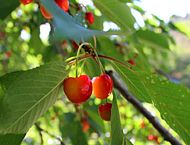
Platanistasa Village
In the northern slope of the Troodos mountain range lies the small village of Platanistasa. Built at an altitude of 940 meters, within steep mountains and narrow valleys and the river Serrachis running across.
More InformationPlatanistasa Village
In the northern slope of the Troodos mountain range lies the small village of Platanistasa. Built at an altitude of 940 meters, within steep mountains and narrow valleys and the river Serrachis running across.
Its existence is estimated since ancient times, where excavated tombs stand proof of the rich history the village holds. Tour around the village and unearth remnants of the old ancient settlements in the area, each telling its own story of their time of existence.
At the center of village one will discover the church dedicated to Archangel Michael, a 19th century build, in place of another smaller church demolished in the 15th century. Wonder north of the village and find the church of St. John the Theologou, refurbished in the 17th century. Trek south and discover the church of Panagia Katafigiotissas along with the bridge dedicated to Panagia Platanistasa.
Learn more about the village’s history by visiting the Monument built in honor of the heroes of the 2nd World War, the Museum of Folk Art, housing the old mill press and the monument of Tradition and Heritage, where a watermill present rare beauty and nostalgia.
A walk around the village will charm all visitors, with its traditional houses and narrow cobbled alleys.
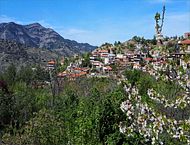
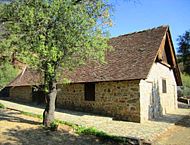
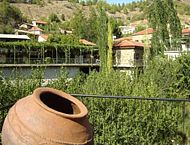
Alona Village
Within the vast Pistilia area, at an altitude of 1,200 meters discover the village of Alona. Travel north of the Troodos mountain and explore the village which has existed since Frankish times.
More InformationAlona Village
Within the vast Pistilia area, at an altitude of 1,200 meters discover the village of Alona. Travel north of the Troodos mountain and explore the village which has existed since Frankish times.
On the foothills of the village lies the unique valley of hazelnut trees, swallowing the village in verdant beauty. Fruit trees such as cherries along with vineyards, and wild shrubs, color the scenery and fill the mind with unforgettable aromas.
Visit the ancient churches, that of Panagia Kardakiotissa, dating back to the 15th century and hidden within the rich vegetation that of Agios Georgios, housing within the exceptional icon of dedicated to the Saint, dating back to 1835.
Adventure into nature, by trekking in the nature trail starting at the village square, and be engulfed by orchards of hazelnut and cherry trees.
In the month of November, the village celebrates the traditional spirit of Zivania with an annual Festival. Sample the famous spirit, learn about its production and have a look around the stalls selling local produce. Whether it’s the picturesque traditional houses with its uphill alleys decorating the village or the majestic natural beauty visitors encounter at the village a stopover will take their breath away.


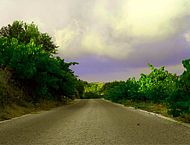
Sykopetra Village
On the eastern foothills of the Pitsilia region, stands the village of Sykopetra. Surrounded by citrus orchards, the small village offers immense natural beauty with wild vegetation and fragrant aromas. Its existence is estimated since the period of The Kingdoms of Cyprus. Legend has it that the name…
More InformationSykopetra Village
On the eastern foothills of the Pitsilia region, stands the village of Sykopetra. Surrounded by citrus orchards, the small village offers immense natural beauty with wild vegetation and fragrant aromas. Its existence is estimated since the period of The Kingdoms of Cyprus. Legend has it that the name was given after the princess Nafsyka, who was passing through stumbled and hit her head on a rock and died. The second version, by a teacher and writer from the nearby village states the name was give after the many prickly pears thriving in the area. Visit the village church dedicated to Saint Demetrios in the village center or the small chapel of Prophet Elias. In addition, visit traditional olive mill press, or relax at the local tavern or coffee shop.



Agios Ioannis Village
On the foothills of Papoutsa mountain the beautiful graphic village of Agios Ioannis stands proud. Rising at an altitude of 880 meters, its history dates back to the 12th century. Its named derives from Saint John Lampadistis, who on his journey stay for a while at the village.
More InformationAgios Ioannis Village
On the foothills of Papoutsa mountain the beautiful graphic village of Agios Ioannis stands proud. Rising at an altitude of 880 meters, its history dates back to the 12th century. Its named derives from Saint John Lampadistis, who on his journey stay for a while at the village.
Explore the narrow uphill alleys, framed by traditional stone built houses with tiles roofs and overflowing with flowered hanging balconies. To the unique character of the village integrated are the peach, apple and cherry trees engulfing the area. Find the traditional village drinking fountain and the monument in honor of the fallen heroes and missing persons of the Turkish invasion of 1974.
The village counts two churches and four chapels one can tour and admire. In the village center rises the Archangel Michael church, the community patron, a 17th century build, housing the miraculous icon of the Archangel. Visit the Saint John chapel built in 1988, the chapel of the Virgin Mary of the Dormition and the chapel of Saint Plyxenis.
Adventure into the numerous nature paths and enjoy the fresh air and majestic natural beauty.


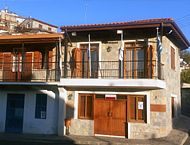
Amiantos Village
Situated at the foot of Troodos mountain, Amiantos village holds a distinct wild beauty. In the past the viallges was divided in two neighboring villages; Kato Amiantos and Pano Amiantos.
It holds a special place in Cypriot history as it once thrived as a mining village. The Amiantos mine, where asbestos was mined, determined the morphology of the area as a crater and rubble was…
Amiantos Village
Situated at the foot of Troodos mountain, Amiantos village holds a distinct wild beauty. In the past the viallges was divided in two neighboring villages; Kato Amiantos and Pano Amiantos.
It holds a special place in Cypriot history as it once thrived as a mining village. The Amiantos mine, where asbestos was mined, determined the morphology of the area as a crater and rubble was created. The pine trees and surrounding forest near the mine was also destroyed. Mining begun in 1904, and miners from far and near moved to the area and settled around the mine during the time where asbestos demand was high. A railroad which began in the area and reached Limassol, transporting asbestos was also constructed.
After the termination of asbestos mining in 1988, the area was slowly abandoned, forcing the two communities to merge in 2005. The mine stands as the only remaining proof of a time of development and wealth.
Tour around the village and take in the wild vegetation, poplars and pines as well as the cultivated land filled with apple, pear, peach, fig and almond trees along with vegetables and vines creating a sea of verdant beauty. Visit the abandoned mines, where you will find a Botanical Garden and the Troodos Geopark. Discover the watermills where inhabitants once ground their wheat and hay, as well as the old bridge built in 1902. Find the monastery of Agios Mamas, surrounded by orchard, gardens and running cold waters. Visit the central church dedicated to Apostle Andrew and the chapel dedicated to Agia Paraskevi. At the village center find the Hadjiktori Community Park, in memory of the first inhabitant of the village.
No matter the season, Amiantos village has a rich history to offer and a unique natural beauty, hence a visit should be at the top of the agenda.
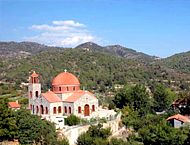

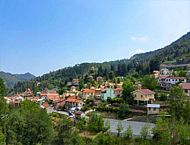
Dymes Village
The small village of Dymes is built at an altitude of 960 meters, on the foothills of Troodos Mountains. Enchancing the magnificent wild vegetation are fruit trees such as apple trees, vineyards, olive, almond and walnut tree. The village is famous for its high quality apples.
More InformationDymes Village
The small village of Dymes is built at an altitude of 960 meters, on the foothills of Troodos Mountains. Enchancing the magnificent wild vegetation are fruit trees such as apple trees, vineyards, olive, almond and walnut tree. The village is famous for its high quality apples.
Its name originates from the ancient city of Achaias Dymi, home to the leader of the first Greek settlers on the island in 1200BC. Trek along the uphill streets of the village and admire folk architecture with traditional houses, decorated by arbors in their courtyards. Travel north and find the old stone church of the village dedicated to John the Baptist, dating back to 1861, or discover the new church dedicated to the same saint built in 1996 in Byzantine style, boasting its magnificence.
Venture along the nature trail of Dymes –Pelendri and enjoy the lush vegetation and the beauty of the Cypriot countryside. Rest at the Community park beneath fragrant pine trees, equipped with wooden benches, barbecues and a drinking water fountain.
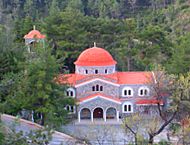
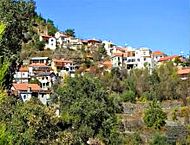
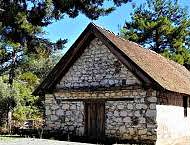
Agridia Village
The village of Agridia sits at an altitude of 1100 meters of the hillside of Pitsilia. A scenic village with winding narrow streets, framed by traditional houses overflowing with pots colored by the season’s blooms.
More InformationAgridia Village
The village of Agridia sits at an altitude of 1100 meters of the hillside of Pitsilia. A scenic village with winding narrow streets, framed by traditional houses overflowing with pots colored by the season’s blooms.
Visit the two churches in the village, both dedicated to Prophet Elias. Find the chapel of Prophet Elias perched on a tall verdant hill, adorned with frescoes; and the church of Prophet Elias in the heart of the village, a Byzantine style church built in 1960.Discover exhibits of the old church of Prophet Elias, dating back to the 16th – 17th century, such as the iconostasi, the icon of Agia Paraskevi, vestments and pictures, at the ecclesiastical museum. Find the old Olive Press which operated until 1960s, displaying the tolls used to produce olive oil. Pay tribute to the heroes of the Liberation struggle of 1955-1959 and the Turkish invasion of 1974, at the hero monument.
Cultivated among the colorful wild vegetation are fruit trees, almond trees and vines cultivated on the terraces of cultivation. Visit the dam built in 1983 or relax under dense pine trees at the excursion area for some tranquility and fresh air.
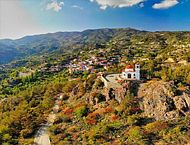
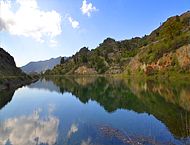

Kato Mylos Village
Perched 750 meters above sea level, on the slopes of the Troodos Mountain is the small village of Kato Mylos. Traditional homes emerge from a dense vegetation creating an portrait of natural beauty.
More InformationKato Mylos Village
Perched 750 meters above sea level, on the slopes of the Troodos Mountain is the small village of Kato Mylos. Traditional homes emerge from a dense vegetation creating an portrait of natural beauty.
Founded In 1692 during a plaque tortured the island, forcing inhabitants of the neighboring village to move to the area of Kato Mylos. According to tradition there were two watermills, the Upper (Pano) mill and Lower (Kato) mill, on the banks of the river Kouris.
As you enter the village admire the stone bridge nestle amongst plane trees. Visit the main village church of Metemporphosis tou Sotira, found at the center of the village. Admire the picturesque houses maintaining their folk architecture along with stone drinking fountains dotted in the village. Venture at the nature trail of Agros- Kato Mylos and discover century old oaks or trek the nature trail of Alonarzia and find the chapels of Agia Paraskevi and Archangel Michael. Rest at the picnic site near the chapel and take in unspoilt natural splendor.
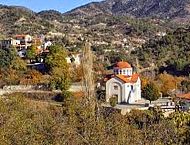

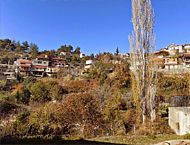
Fterikoudi Village
The quaint village of Fterikoudi is built at an altitude of 1050 meters in the verdant slopes of Troodos mountain. The village dates back to 1570, and hosts important relics of history. Recent excavations unearthed an ancient temple and a tomb entrance dating back to the Mycenaean era.
More InformationFterikoudi Village
The quaint village of Fterikoudi is built at an altitude of 1050 meters in the verdant slopes of Troodos mountain. The village dates back to 1570, and hosts important relics of history. Recent excavations unearthed an ancient temple and a tomb entrance dating back to the Mycenaean era.
Visit the main village church dedicated to Agios Nikolaos, built in 1818 and renovated in 1992. Housed within are a golden chancel, a replica of the old one. Explore the chapel of Saint and Prophet Avvacum, which tradition says to be miraculous. The chapel was built in 1989 and houses the saints remains. To the west of the village find the small chapel dedicated to Panagia Crhysogalousa (Galaktoforousa), built in 1998, in place of an older temple destroyed by the Turks in 1575.
Pay tribute to the fallen heroes of the village at the Monument erected in 2000, in memory of the hero Panagiotis Katsidiaris, who fell in 1974 during the invasion. Stroll around the village and admire views of wild vegetation such thyme, terebinth and golden oaks aromatizing the fresh air as the mix with lush pine trees. While cultivated hazel, almond, apple and cherry trees colour the land. Take in the vast expanse of olive trees and vineyards, which produce wine and the traditional spirit of Zivania.
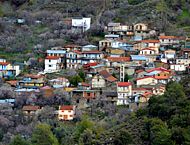
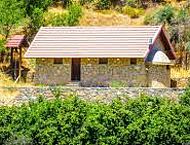

Lagoudera Village
On the foothiils of Madari, at an altitude of 1000 meters, lies the village of Lagoudera. Belonging amonagst the tallest twenty village of the island, it offers views of mountain tops and wild vegetation. Expanses of wild uncultivated land are filled with pine trees, golden oak, the sumac, chamomile and hazel nut trees as well as wild rose bushes.
More InformationLagoudera Village
On the foothiils of Madari, at an altitude of 1000 meters, lies the village of Lagoudera. Belonging amonagst the tallest twenty village of the island, it offers views of mountain tops and wild vegetation. Expanses of wild uncultivated land are filled with pine trees, golden oak, the sumac, chamomile and hazel nut trees as well as wild rose bushes.
Its history dates back to the Frankish period and is houses historical relics. Find the Byzantine chapel of Panagia tou Araka, belonging to one of the 10 churched on the UNESCO World Heritage List. A 12th century church adorned with exquisite frescoes in late Comnenian styles. In addition, visit the 16th century church of Agios Georgios. Visit the Lodge, the homes of the late village hero Michalakis Eleftherios, who fought during the Liberation Struggle of 1955-1959.
Venture into the nature trail starting at Panagia Araka and ending at the Monastery of the Cross of Agiasmati.


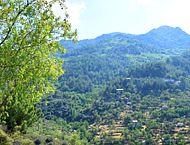
Livadia Village
Below the mountains of Madari at an altitude of 1000 meters, the village of Livadia Pitsilias offers magnificent views of steep slopes and wild vegetation. Surrounded by mountains, pine and oak trees, and crossed by the river Peristerona and Elias, enjoy environs bursting with lush greenery, ensuing tranquility.
More InformationLivadia Village
Below the mountains of Madari at an altitude of 1000 meters, the village of Livadia Pitsilias offers magnificent views of steep slopes and wild vegetation. Surrounded by mountains, pine and oak trees, and crossed by the river Peristerona and Elias, enjoy environs bursting with lush greenery, ensuing tranquility.
Visit the main village church dedicated to Agia Paraskevi, built in 1880 amongst large walnut, almond and cherry trees. A stone built church with tiled wooden roof, now under the protection of the Department of Antiquities. Discover the chapel of Apostle Andreas and the chapel of Agios Mamas. Pay tribute to the village hero who fell during the Liberation Struggle and taste drinking mountain water at the stone fountain in the heart of the village.
Stroll around the village and take in the impressive stone built houses, with wooden balconies and large exterior doors. The small village of Livadia offers a unique journey within nature leaving a sweet taste of rural life.

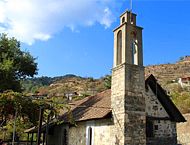

Alithinou Village
The small village of Alithinou is located on rugged mountainous landscape, at an altitude on 930 meters. Its name originates from the first inhabitant whose surname was ‘Alithinou’.
Encounter this small village, and admire unspoilt folk architecture of stone built houses, blending into lush vegetation. Its habitants are only 9 and it belong to the villages which was abandoned due to the harsh landscape which left no room for crop cultivation.
Alithinou Village
The small village of Alithinou is located on rugged mountainous landscape, at an altitude on 930 meters. Its name originates from the first inhabitant whose surname was ‘Alithinou’.
Encounter this small village, and admire unspoilt folk architecture of stone built houses, blending into lush vegetation. Its habitants are only 9 and it belong to the villages which was abandoned due to the harsh landscape which left no room for crop cultivation.
Visit the church of Agios Mamas, located on a flat plain and based on the inscriptions in the temple is was built in 1902 on the ruins of an older temple. Admire the entrance located west build using tiles and decorated with a wooden door. Additionally, find the chapel dedicated to Saint Anna, a basilica church with a wooden roof and stone wall.
Trek north to the picnic area where you can relax and barbecue. Facilities include wooden benches and tables barbecue area and a drinking water fountain. Enjoy a coffee break at the small kiosk which operated on summer weekends and walk along the river and take in the lush hazelnut trees.
